Alexandria, Virginia was founded in 1749 after local businessmen petitioned the Virginia colonial government to establish a town at the site of what was then a tobacco warehouse. The goal of establishing a new town at this site was to help facilitate operations for the Ohio Company of Virginia, created to conduct trade between the Virginian colonists and the native peoples of Virginia and what is now present-day Ohio. One of the founding members of the Ohio Company was a young land surveyor named George Washington, the very same George Washington who would go on to become America’s first President. Washington even drew a sketch of the proposed site of Alexandria that was included in the petition to the colonial government. Though the city would not be officially incorporated until 1779, in the summer of 1749 roads were laid out by the country surveyor and an auction for plots of land was conducted. Today, this original site of Alexandria is what is known as “Old Town Alexandria” or simply Old Town. While I don’t live inside this part of the city, I am just a couple of blocks away from it, and that is the direction that I will head on my walk.
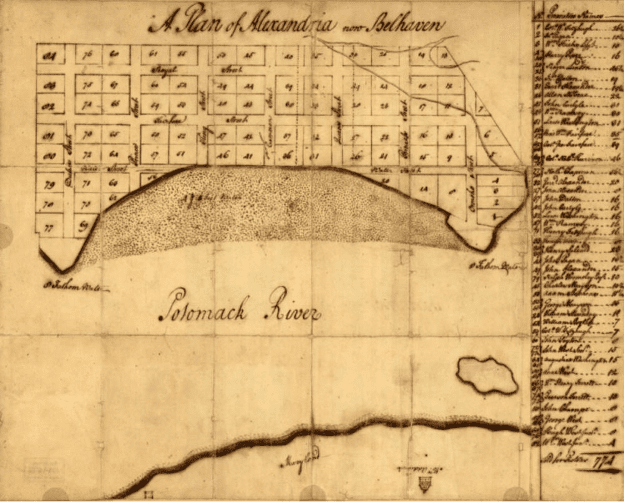

As my wife and I step out of the front door of my apartment building and walk across the street, we first see Alexandria’s African American Heritage Park, a satellite site for Alexandria’s Black History Museum.
We walk west. Just behind the park is Alexandria National Cemetery, the resting place of a large number of Union soldiers who died during the American Civil War, including many unknown soldiers. We pass several other local cemeteries, turn north and cross Duke Street. If instead of turning north, we had walked south and woven our way through a couple of housing complexes, we would have passed the boundary stone that once marked the border of the District of Columbia. This part of Virginia was part of the District from 1791 to 1846.
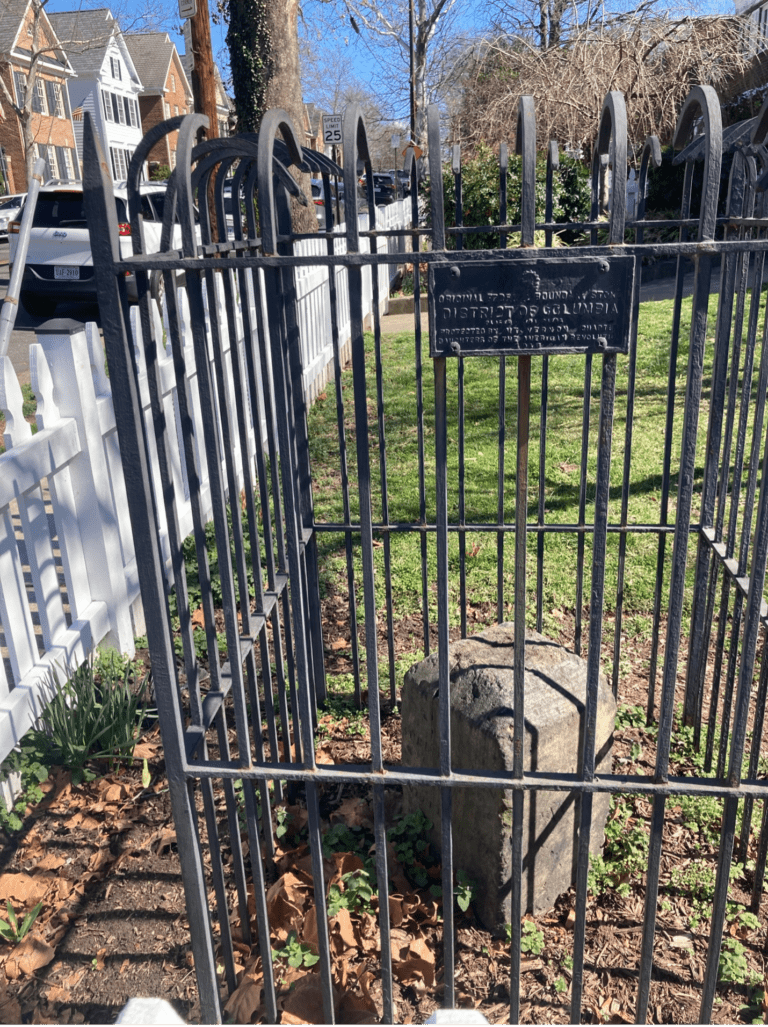
Once across Duke Street, we are officially in Old Town. We continue to walk north toward King Street, the central street in Old Town, but just before we reach it, I pass my favorite coffee shop, Via Volcan. Via Volcan gets all of their coffee from their family-owned farm in Panama, which they roast on site in Old Town. Once we walk past Via Volcan, We’re on King Street and we turn west again heading toward the Potomac River.

Old Town is teeming with history and teems with ever greater intensity as we get closer waterfront. As we walk past the buildings, many of them have plaques indicating that the building has historical significance. Many of the plaques indicate nothing more than the presence of the building on the city’s historical registry. Other plaques are brimming with historical details. One such building is George Washington’s Tenement House. This house is on Pitt Street, just off of King Street to the south, and was owned by Washington as an investment property.
The Washington house is two blocks away from Alexandria City Hall which sits on Market Square. At Market Square on alternate Saturdays, there is a farmers’ market. The market has been in operation for over 260 years at this same site. It was here that George Washington sold produce grown on his Mount Vernon estate. Today, the market is full of vendors of different kinds, while fresh fruits and vegetables are more abundant during the late summer and fall, honey, dairy products, and craft goods are sold here year-round. We stop by this market regularly to pick up some of the week’s groceries and do so today.
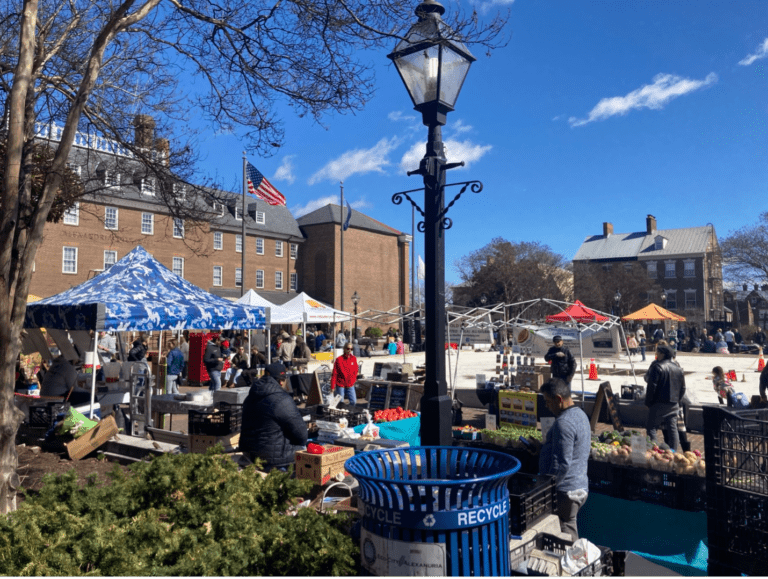
From Market Square we head south down Royal Street to Lavender Moon Cupcakery and buy a couple of red velvet cupcakes before heading back to King Street.
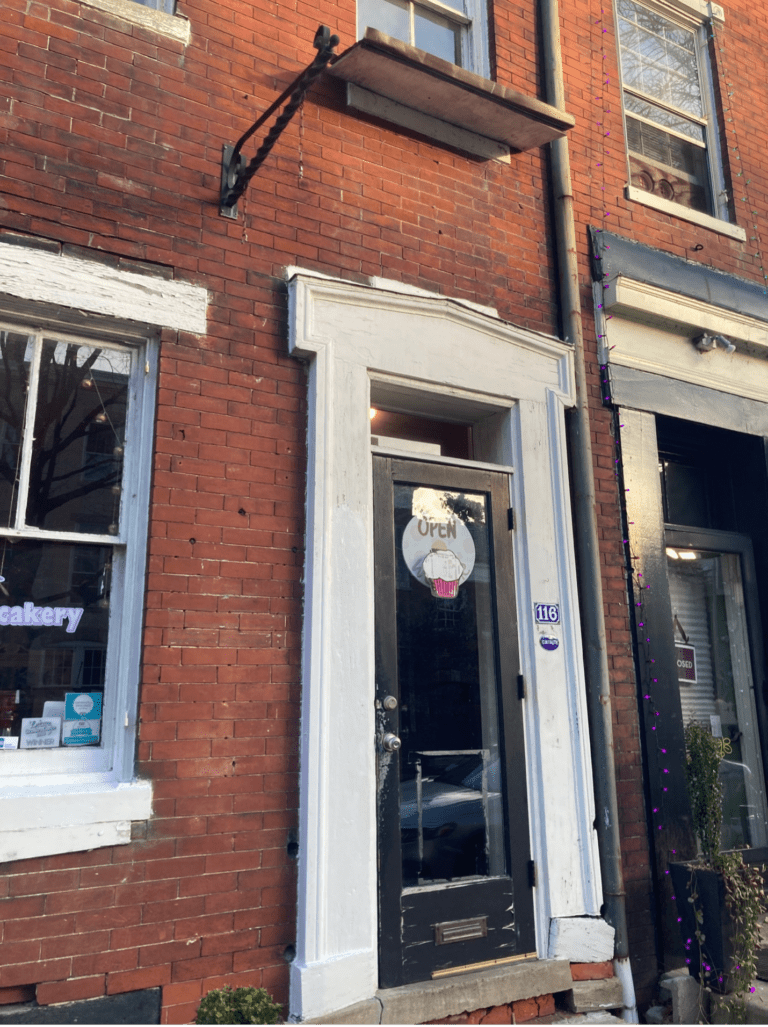
Alexandria has a fantastic waterfront. The waterfront park is a great place to enjoy the cupcakes before heading north toward the Torpedo Factory. The Torpedo Factory has not made torpedoes since 1946, and since 1973 has been home to artists’ studios. This is a great place to wander around for an hour or two on a Saturday morning perusing the various studios and their diverse artistic offerings. We don’t linger over art today and instead head up a block to Cameron Street, we walk back east for a few blocks and finish at Caphe Banh Mi. We call a halt to our walk here, open an inviting door and have a delicious bowl of pho for lunch.
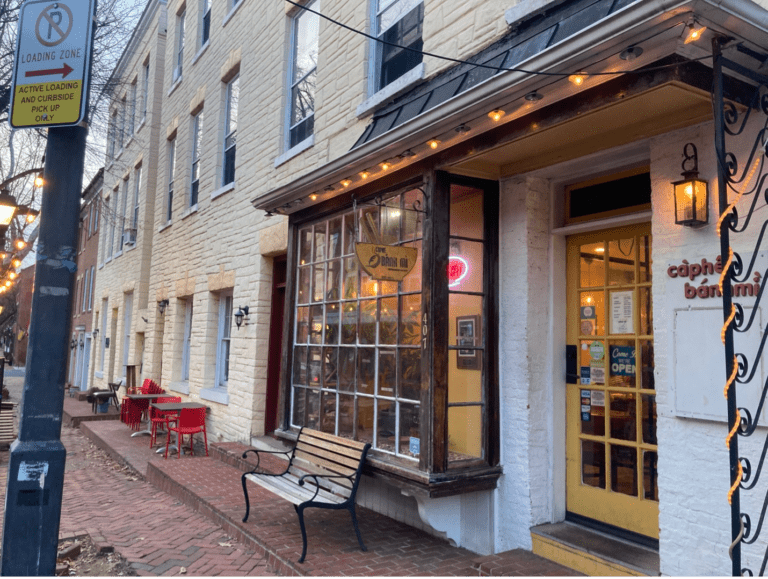
As we sit and eat our pho, we discuss the magnitude of history in this small neighborhood. Having grown up in the western United States, I am always fascinated by any place with a recorded history of over 150 years. Not only does Alexandria pass this bar, but it also plays to my historical fascination by marking notable locations. Additionally, what makes this little city so fascinating is the connection to the everyday economic activities of major American historical figures, most notably George Washington. As we slurp our soup, we chat about Old Town having a simple grid pattern of streets, whereas newer parts of the city of Alexandria have more modern street layouts. This newer layout, in addition to the constriction of the Capital Beltway road system, constricts Old Town, both seeming to restrict access from other parts of the city, as well as making Old Town seem like a refuge from the surrounding urban sprawl. Both of us are grateful that we are able to live on the edge of this refuge.







